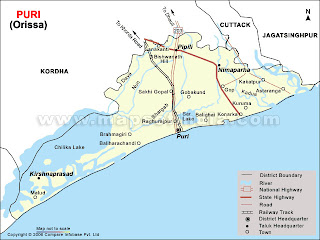SL.No Period
Name To From
1. Sir John Austen Hubback Apr 01, 1936 Aug 11, 1938
2. George Townsend Boag (Acting) Aug 11, 1938 Dec 07, 1938
3. Sir John Austen Hubback Dec 08, 1938 Mar 31, 1941
4. Sir Howthorne Lewis Apr 01, 1941 Mar 31, 1946
5. Sir Chandulal Trivedi Apr 01, 1946 Aug 14, 1947
6. Dr. Kailash Nath Katju Aug 15, 1947 Jun 20, 1948
7. M.Asaf Ali Jun 21, 1948 May 05, 1951
8. V.P. Menon(Acting) May 06, 1951 Jul 17, 1951
9. M. Asaf Ali Jul 18, 1951 Jun 06, 1952
10. Saiyid Fazl Ali Jun 07, 1952 Feb 09, 1954
11. P. S. Kumaraswamy Raja Feb 10, 1954 Sep 11, 1956
12. Bhim Sen Sachar Sep 12, 1956 Jul 31, 1957
13. Yeshwant Narayan Sukthankar Jul 31, 1957 Sep 15, 1962
14. Dr. Ajudhia Nath Khosla Sep 16, 1962 Aug 05, 1966
15. Khaleell Ahommed (Acting) Aug 05, 1966 Sep 11, 1966
16. Dr. Ajudhia Nath Khosla Sep 12, 1966 Jan 30, 1968
17. Dr. Shaukatullah Shah Ansari Jan 31, 1968 Sep 20, 1971
18. Sardar Jojendra Singh(Acting) Sep 20, 1971 Jun 30, 1972
19. Justice Gatikrishna Mishra Jul 01, 1972 Nov 08, 1972
20. Basappa Danappa Jatti Nov 08, 1972 Aug 20, 1974
21. Justice Gatikrishna Mishra Aug 21, 1974 Oct 25, 1974
22. A A Khan Oct 25, 1974 Apr 17, 1976
23. Justice Shiva Narayin Sankar
(Acting) Apr 17, 1976 Feb 07, 1977
24. Harcharan Singh Brar Feb 07, 1977 Sep 22, 1977
25. Bhagwat Dayal Sharma Sep 23, 1977 Apr 30, 1980
26. Cheppudira Muthana Poonacha Apr 30, 1980 Sep 30, 1980
27. Justice S.K. Ray (Acting) Oct 01, 1980 Nov 03, 1980
28. Cheppudira Muthana Poonacha Nov 04, 1980 Jun 24, 1982
29. Justice R.N. Mishra (Acting) Jun 25, 1982 Aug 31, 1982
30. Cheppudira Muthana Poonacha Sep 01, 1982 Aug 17, 1983
31. Bishambhar Nath Pande Aug 17, 1983 Nov 20, 1988
32. Prof.Saiyid Nurul Hasan Nov 20, 1988 Feb 06, 1990
33. Yagya Datt Sharma Feb 07, 1990 Feb 01, 1993
34. Prof. Saiyid Nurul Hasan Feb 01, 1993 May 31, 1993
35. B. Satyanarayan Reddy Jun 01, 1993 Jun 17, 1995
36. Gopala Ramanujam Jun 18, 1995 Jan 30, 1997
37. K.V. Raghunatha Reddy Jan 31, 1997 Feb 12, 1997
38. Gopala Ramanujam Feb 13, 1997 Dec 13, 1997
39. K.V. Raghunatha Reddy Dec 13, 1997 Dec 27, 1998
40. Dr. C. Rangarajan Apr 27, 1998 Nov 14, 1999
41. M.M.Rajendran Nov 15, 1999 Nov 17, 2004
42. Rameshwar Thakur Nov 18, 2004 Aug 21, 2007
43. Murlidhar Chandrakant
Bhandare Aug 21, 2007 Till Date






